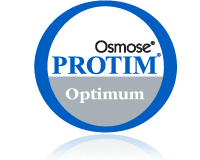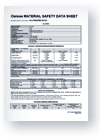Protim Optimum (LOSP) Treated Wood
What is Protim Optimum?

PROTIM OPTIMUM is an effective preservative formulation designed to provide a lasting protection for wood products used in external situations above ground - Hazard Level 3 (R2 Chile, Australia, H3.1-New Zealand). The formulation contains specialized fungicides for protection against fungal decay and an insecticide to provide lasting protection from termites and other wood boring insects. The complete formulation is applied by a controlled vacuum pressure process.
PROTIM OPTIMUM uses an organic solvent carrier to transport the active ingredients into the wood. This solvent does not saturate wood cells and causes little or no swelling during treatment.
This means that the timber maintains its original size, shape and strength grading.
PROTIM OPTIMUM is one of a family of preservative systems, commonly referred to as L.O.S.P or light organic solvent preservatives.
PROTIM OPTIMUM treated timber requires no kiln drying after treatment as the solvent evaporates from the timber over time without additional heating.

Water Repellent
The water repellent resin and wax system included in the formulation retards the rate at which water, is absorbed by the timber, during construction. This enhances dimensional stability.
Use an End-Cut Preservative
All timber products should be treated in their final shape and form. Any surface exposed by drilling or cutting must be retreated with a suitable cut end preservative (Protim Solignum XJ clear timber protective (or similar) preservative is recommended). Failure to re-treat may negate the value of the preservative and is a requirement of the guarantee. Rip sawing, thicknessing and planing are not permitted unless the timber is subsequently re-treated to the original specification. Always follow manufacturers recommendations.
LOSP Registrations
- Approved for use in Chilean Standard NCH 819 and NCH790.
- Authorizedby the SERVICIO AGRICOLA GANADERO (SAG).
- Protim S65
- Protim Optimum
- Accepted by the SERVIU (Urban and Housing Ministry) for risks R1, R2 and R3.
Coatings
Whatever finish you use, always check the label of the finishing product and follow the manufacturers instructions.
- PROTIM Optimum treated timber can be coated with most industrial alkyd based joinery primers once the timber has completed drying after treatment.
- PROTIM Optimum treated timber may be painted with alkyd based primers. To achieve a durable finish subsequent onsite preparation and top coating should be as recommended by the manufacturer.
- Certain acrylic primers are not compatible with timber treated with LOSP preservatives.
- If acrylic primers are to be used it is advisable to contact the paint manufacturer or qualified agent before use.
Glues
- PROTIM LOSP treated timber can be normally glued with resorcinol, phenol / resorcinol or urea formaldehyde glues, following the product manufacturers instructions.
- PROTIM LOSP does not normally affect cured glue used to bond solid timber. However, where adhesives are to be used with structural treated timber where failure of the gluing would have severe effects, it is advised that trials are undertaken to ensure performance is adequate.
Sealants
- PROTIM LOSP treated timber is compatible with most sealants and mastics, provided manufacturers instructions are followed.
MSDS (Material Safety Data Sheet)

Important Information
- Do not burn preserved wood.
- Wear dust mask and goggles when cutting or sanding wood.
- Wear gloves when working with wood.
- Some preservative may migrate from the treated wood into soil/water or may dislodge from the treated wood surface upon contact with skin. Wash exposed skin areas thoroughly.
- All sawdust and construction debris should be cleaned up and disposed of after construction.
- Wash work clothes separately from other household clothing before re-use.
- Preserved wood should not be used where it may come into direct or indirect contact with drinking water, except for uses involving incidental contact such as fresh water docks and bridges.
- Do not use preserved wood under circumstances where the preservative may become a component of food, animal feed or beehives.
- Do not use preserved wood as mulch.
- Only preserved wood that is visibly clean and free of surface residue should be used.
- If the wood is to be used in an interior application and becomes wet during construction, it should be allowed to dry before being covered or enclosed.
- Disposal Recommendations: Preserved wood may be disposed of in landfills or burned in commercial or industrial incinerators or boilers in accordance with federal, state and local regulations.
- If you desire to apply paint, stain, clear water repellent or other finish to your preservative treated wood, we recommend following the manufacturers instructions and label of the finishing product. Before you start, we recommend you apply the finishing product to a small exposed test area before finishing the entire project to insure it provides the intended result before proceeding.
- Mold growth can and does occur on the surface of many products, including untreated and treated wood, during prolonged surface exposure to excessive moisture conditions. To remove mold from the treated wood surface, wood should be allowed to dry. Typically, mild soap and water can be used to remove remaining surface mold. For more information visit www.epa.gov

